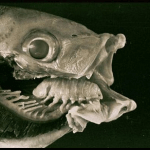Image permission: Doing it right
Whether you’re putting together a permanent exhibit or a last-minute powerpoint, it’s all but inevitable that you’ll encounter a point at which the most sensible option is to use material that someone else created. This is more frequently the case with images since they’re usually harder to recreate yourself. And in the age of Google Images and instant screenshots, there’s almost nothing in practical terms that can stop you from using any picture you want. Here at Talk Science however, we recommend being careful with your media usage—and we negotiate image permission for many of our clients.
Read More »Image permission: Doing it right
